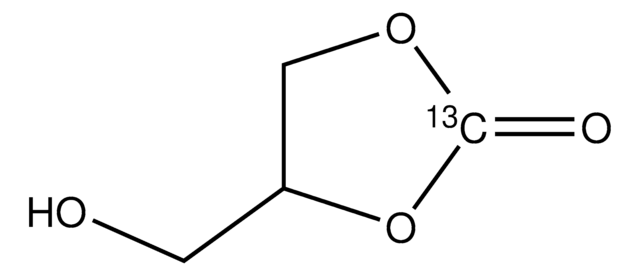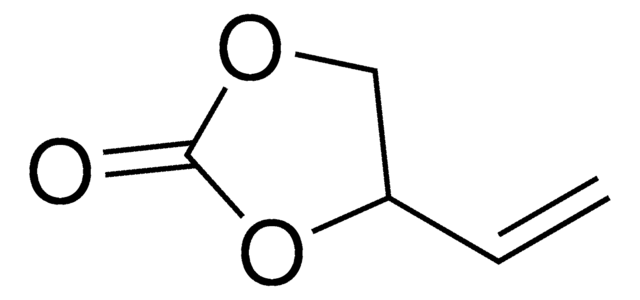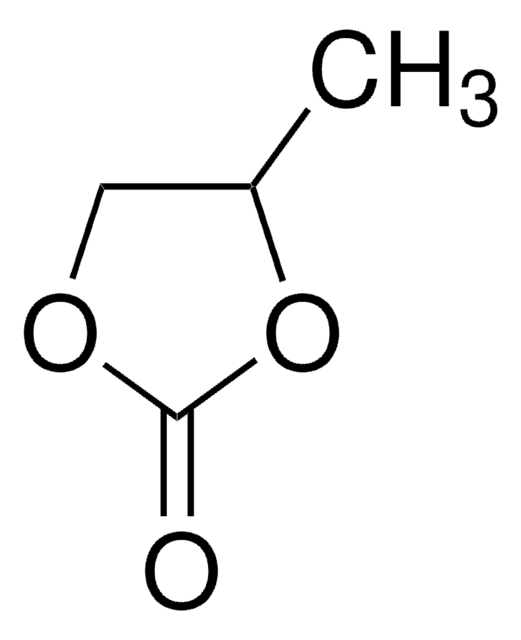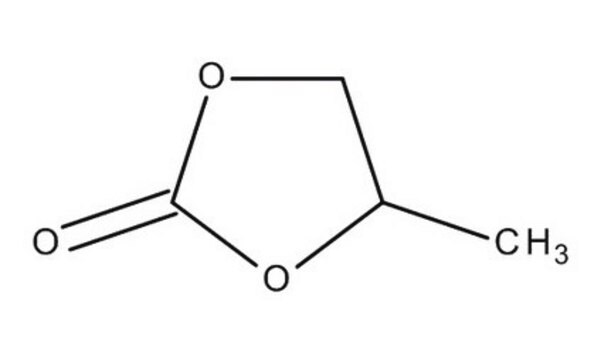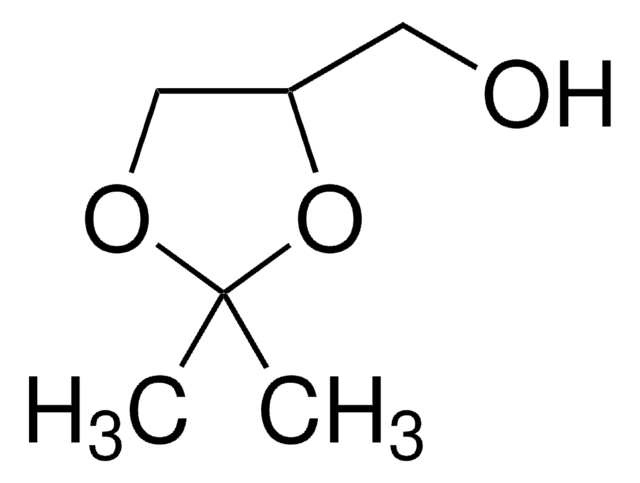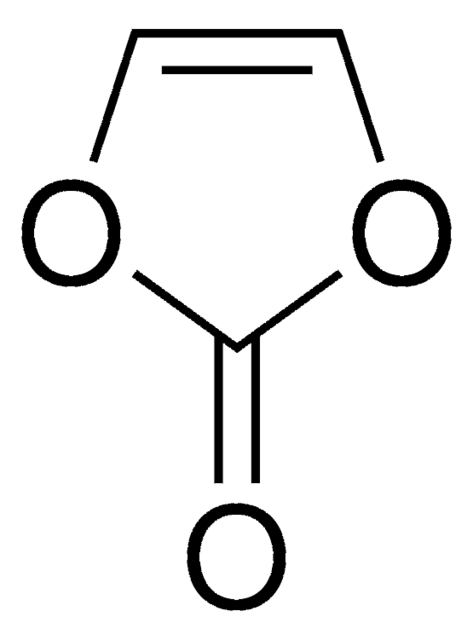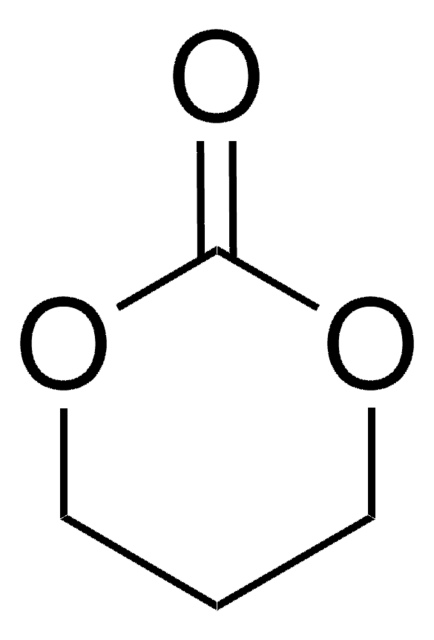455067
4-(Hydroxymethyl)-1,3-dioxolan-2-one
Synonyme(s) :
(2-Oxo-1,3-dioxolan-4-yl)methanol, 3-Hydroxypropene carbonate, 3-Hydroxypropylene carbonate, 4-Methylolethylene carbonate, Glycerin carbonate, Glycerol 1,2-carbonate
About This Item
Produits recommandés
Indice de réfraction
n20/D 1.469 (lit.)
Niveau de qualité
Point d'ébullition
137-140 °C/0.5 mmHg (lit.)
Densité
1.4 g/mL at 25 °C (lit.)
Groupe fonctionnel
carbonate
hydroxyl
Chaîne SMILES
OCC1COC(=O)O1
InChI
1S/C4H6O4/c5-1-3-2-7-4(6)8-3/h3,5H,1-2H2
Clé InChI
JFMGYULNQJPJCY-UHFFFAOYSA-N
Catégories apparentées
Application
- 4-[(prop-2-en-1-yloxy)methyl]-1,3-dioxolan-2-one (AGC) via Williamson ether synthesis with 3-bromoprop-1-ene.
- Hyperbranched polyethers via copolymerization with cyclic carbonate containing phthalimide moieties.
- (2-Oxo-1,3-dioxolan-4-yl)methyl benzeneacetate by reacting with phenylacetyl chloride.
Code de la classe de stockage
10 - Combustible liquids
Classe de danger pour l'eau (WGK)
WGK 1
Point d'éclair (°F)
230.0 °F - closed cup
Point d'éclair (°C)
110 °C - closed cup
Équipement de protection individuelle
Eyeshields, Gloves, multi-purpose combination respirator cartridge (US)
Faites votre choix parmi les versions les plus récentes :
Certificats d'analyse (COA)
Vous ne trouvez pas la bonne version ?
Si vous avez besoin d'une version particulière, vous pouvez rechercher un certificat spécifique par le numéro de lot.
Déjà en possession de ce produit ?
Retrouvez la documentation relative aux produits que vous avez récemment achetés dans la Bibliothèque de documents.
Les clients ont également consulté
Notre équipe de scientifiques dispose d'une expérience dans tous les secteurs de la recherche, notamment en sciences de la vie, science des matériaux, synthèse chimique, chromatographie, analyse et dans de nombreux autres domaines..
Contacter notre Service technique